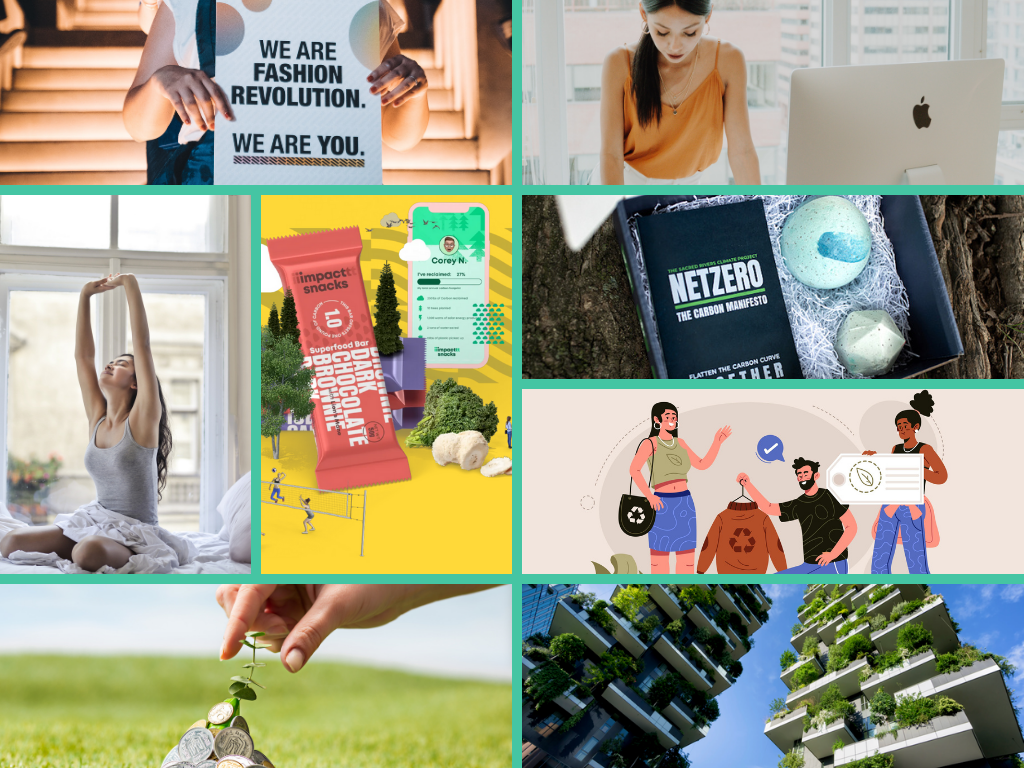12 Mins Read
It’s that time of the year again, a new dawn, or in 2021’s case, a better dawn, because hey, what can be worse than 2020? New year = new set of Green Queen trend predictions (proud to share that we still haven’t been wrong yet). This year, for the first time, we have two separate trend reports, one dedicated to alternative protein industry, which one of the main verticals of content at Green Queen Media and a more general set of predictions for sustainability and eco living. The pandemic has changed everything about everything and many of the below trends are a direct result of how our everyday lives have been transformed. While there will be a return to normalcy eventually, certain daily habits and activities have been altered for good. Below, we talk through all the ways in our annual trend report: welcome to Green Queen‘s 2021 eco wellness predictions.
1) Hybrid Living: Virtual Everything Is Here To Stay

Here’s a fun thought: we’re never going back to pre-pandemic living. While coronavirus vaccinations have begun, there are many reasons why many people will not return to the 2019 status quo. Firstly, it’s going to take a while to make sure everyone’s safe- who knows how long at this point? Secondly, most people now have Covid whiplash- the post pandemic stress is real, so why take unnecessary risks? Plus, being at home more is easier and more convenient- less angst-inducing commuting, less carbon-heavy air travel, less wasted time transporting oneself from here to there. While nothing can replace in-person bonding with another human being, there are many things you can enjoy and pursue without leaving your sofa, and now you have the permission AND the possibility to do so. The future will be a blend of virtual and in-person living. VR concerts and virtual festivals are already here, virtual office work is a daily reality (thank you Zoom), virtual workouts are now preferred, and while virtual happy hours have already become a thing, 2021 will mainstream the virtual party. Long story short? A large part of your social life is moving online, including the advent of online-only friendships (yes, for real). Our lives are now forever changed so while we’re all looking forward to face-to-face meet-ups, here’s what many of us will be investing in: more ergonomic & comfortable home work space; beauty habits & fashion choices that are geared towards Zoom call aesthetics and apps that help us connect, collaborate, communicate and socialise better. Hybrid living is here to stay and businesses that help us to do it right will win.
2) Generation Z Takes Over the World

The rise of GEN Z. Millennials are so 2020. For the past few years, millennials, aka the generation born between 1980 and 2000 (depending on which definition you go for) has been at the forefront of all consumer trend discussions. And as a generation, millennials created havoc (in a good way). They were the first demographic to care about a company’s values, the first to spend (a lot of) money on health, wellness and organic food, the first to want careers with purpose and the first to be united no matter their geographic location by the ascent of digital living. Today though, it’s all eyes on Gen Z, also known as zillennials or zoomers, the generation born between 1996 and 2016, who will overtake millennials in spending power by 2031. They are a whole new ballgame: they don’t drink alcohol, they are not interested in driving cars, and meat is OFF the menu for this rising cohort, who are also the least racist, the least sexist, and the least mono-cultural of any demographic prior. Climate change is their engulfing reality: Greta Thunberg is their spirit animal, and environmentally motivated lifestyle choices the only option they understand. Their views and values will shape brands for decades to come, and here’s the thing: we’re not sure brands are ready for it. Attention founders and brand-makers: GEN Z are the future of your business.
3) 360 Degree Brands: No Mercy For Mistakes
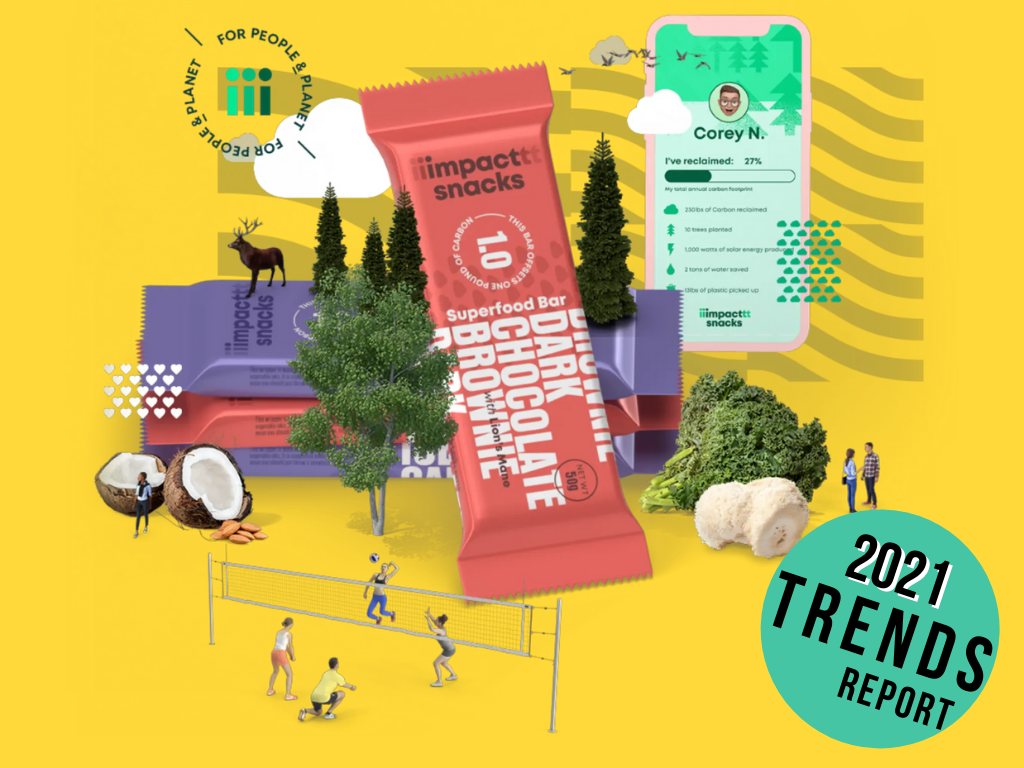
Social media has made it almost impossible for brands to get away with mishaps. No matter how small your misstep, you can bet your bottom bitcoin that these days, your social channels will blow up with critiques and complaints if you so much as mention a single-use plastic straw. The real contempt is reserved for brands who assume progressive values without going all the way. A sustainable fashion brand that promotes animal leather? Not going to fly. A plant-based meat with non-eco packaging? You’ll get blowback for that. An eco food brand whose factory is powered by coal? Uh-uh. Consumers today are AWARE and EDUCATED, and they show no mercy for mistakes, so brands need to wake up and smell the certified compostable, plastic-free, no single-use sheet music. Environmental and social concerns must be a priority all the way from the energy you use to power your servers, to your product’s packaging (recyclable is no longer enough), to how the people that make up your supply chain are treated- it’s all about 360 degree brands. Consider everything: invest in a sustainability manager. Create an ethics strategy. Measure your company’s carbon footprint. Review your D&I profile. All aspects are fair game for your customers, who will hold you to the highest standard out there. You can no longer afford to be on auto-pilot.
4) Women-Led Business: Our Time Has Come
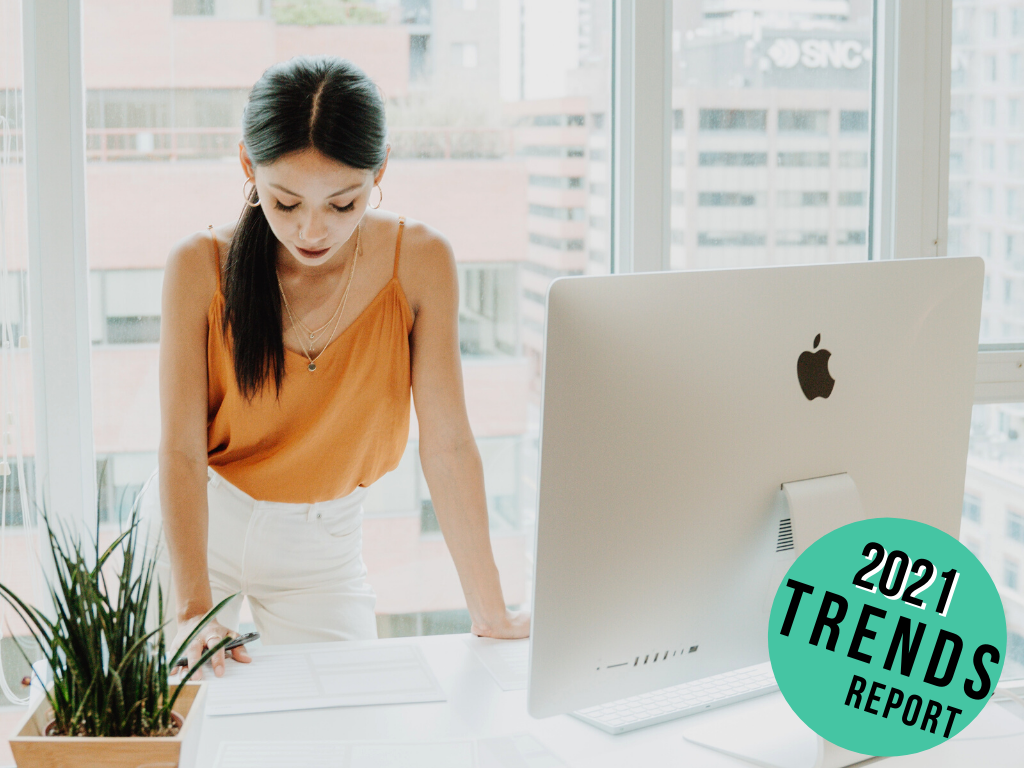
The time has finally come: the age of women is finally upon us. Women are responsible for an eye-popping 70% plus of consumer purchasing decisions, through buying power and influence. And yet, the vast majority of brands are created by men- globally less than 1 in 3 businesses are owned by women (and shockingly, even though hundreds of companies go public on the NY Stock Exchange each year, only 20 women companies have IPO-ed EVER. Yes, we said EVER. This is over. It’s time for women-led, women-managed, women-owned and women-founded brands and women-created and women-designed products to rule the world. No one can anticipate the needs of women better than women, and since we’re the ones spending all the money, we should be in charge of deciding what gets on shelves, from inception to merchandising. Honestly, this should not even NEED to be a trend but here we are.
5) Forget Carbon Neutral, Climate Positive Is Where The Great Brands Are Going
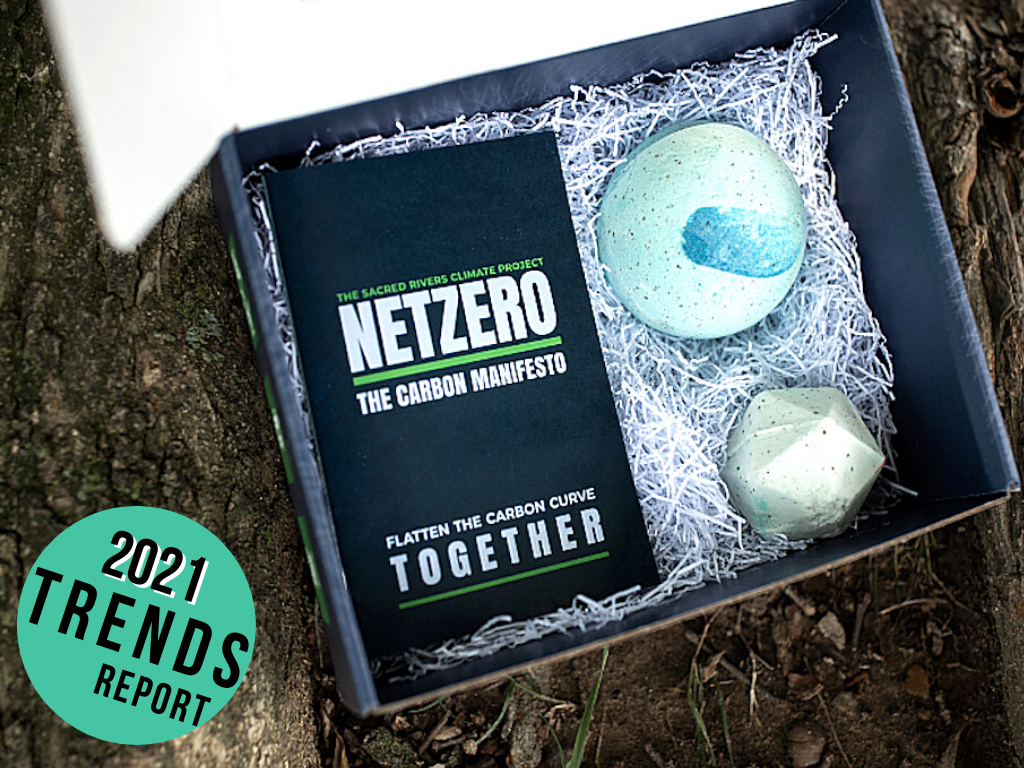
We talked about 360 degree brands up above, and out of that larger trend comes this more niche one: carbon neutral ain’t cutting the mustard any longer. While it’s fantastic that so many corporations are committing to ensure their activities do not create additional carbon emissions to our global tally (or if they do, that they are offsetting them and achieving carbon neutrality), the brands that will win tomorrow are those that set themselves up for climate positivity, whereby your company’s activities are going “beyond achieving net zero carbon emissions to actually create an environmental benefit by removing additional carbon dioxide from the atmosphere” as Fast Company defines it. Climate positive actions, which encompass more than just neutralising carbon emissions to address other greenhouse gas and climate change culprits, include supporting tree planting (not just to achieve neutrality but to create an excess of oxygen producing plants), carbon capture and sequestration (keeping CO2 out of the atmosphere, investing in veganic farming and regenerative agriculture (following practices that help to reverse climate change by rebuilding soil organic matter and restoring soil biodiversity) and more. Even the Olympics is getting in on it. This new trend dovetails the advent of carbon emissions labelling- from Unilever to Just Salad to Flora, companies are proactively showing consumers what a product’s footprint is and you can expect to see WAY more of that too.
6) The Rise Of Green Finance Literacy: Eco Money Activists Get Loud
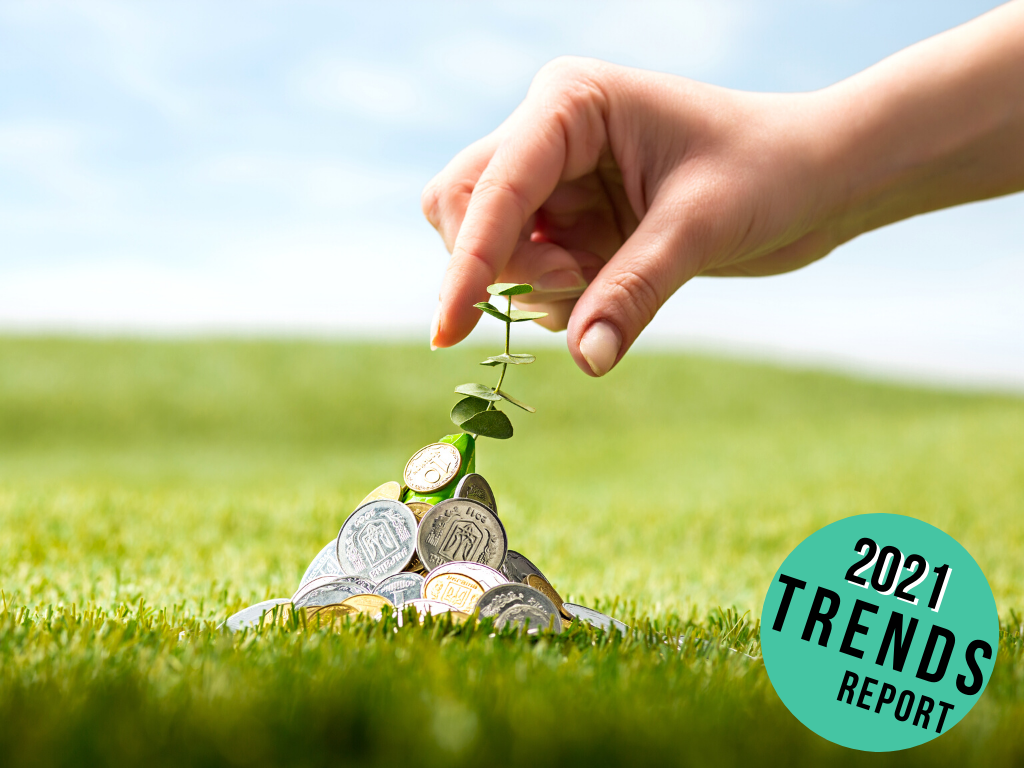
Consumers of 2021 know all about how to live consciously- they know about reducing waste, and eating plant-based, and lowering energy consumption and lowering their transportation emissions and buying in bulk and avoiding plastic. They are AWARE and EDUCATED as we mentioned above, and they want to ensure that their purchasing decisions are as low-impact as possible. But one area that’s a huge blind spot still today? Green finance. It’s a big term but the basic idea is to ensure that your savings/investments/401K/retirement funds are not contributing to the climate crisis and other major environmental concerns- deforestation, oil & gas and industrial livestock farming, for a start. The problem is that most of us are far removed from the ins and outs of what banks do with our money (financial illiteracy is a major issue globally, and one that worsens every year. One of the reasons for this is that Finance is like maths- most of us are intimidated by all the numbers. The other reason behind all this opacity? Banks don’t really want you to know everything. Or most things. This is going to change thanks to the rise of eco money activists. Just like consumers are demanding transparency from food, fashion and consumer goods companies, so banking customers are going to start asking questions about where their money is going and what it’s funding. ESG investing, vegan ETFs, green exchanges– options for conscious institutional investors are exploding and the average retail investor is poised to follow suit. Fasten your seatbelts, portfolio managers, things are going to bumpy if you’re backing the wrong horses. Also, green fintech companies are about to have a moment.
7) From Diverse Design To Upcycled Everything, Fashion Will Never Be The Same Again
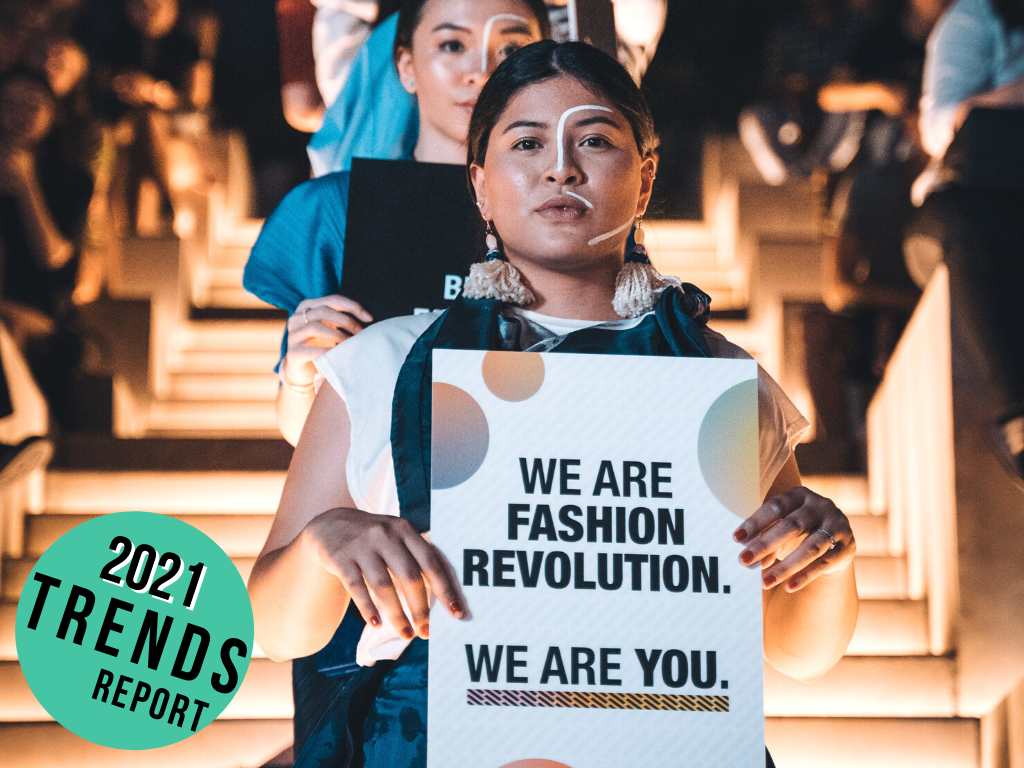
Of all the industries mentioned in these predictions, it’s our view that the fashion industry is going to experience the most change. It’s also the one that most needs to change. From unethical supply chains and factory exploitation, to cotton picked by forced Uighur labor, from microfibres destroying the ocean to the textile waste problem to a shocking lack of diversity in both marketing and sizing, fashion brands are under major scrutiny from activists and regular consumers alike to C H A N G E. Here’s what’s coming: 1) Diverse design, ie shapes and styles created by all kinds of humans FOR all kinds of humans (the era of skinny men designing for skinny women will hopefully be over) but also with influences from all kinds of heritages and all kinds of people (hello, gender-neutral clothing); 2) Locally made (aka locally produced) is going to have a comeback- one of the best ways to ensure your supply chain is humane and ethical is to keep it in your backyard; 3) Made to order (aka made to measure) will become the norm- fashion brands of today over-manufacture, and we consumers over-buy, resulting in huge amounts of unsold and unworn clothing that ends up clogging our landfills. Today’s forward-thinking brands are experimenting with slow fashion, aka on-demand production schedules to fight fast fashion and its perils; 4) Upcycled everything: We’ve got so much textile waste and other waste to contend with these days that many sustainable fashion brands are getting serious about circularity- using waste previously discarded materials to create new pieces. In our view, other than the preloved fashion boom, there is no more sustainable choice than an entirely upcycled piece; 5) Manufacturing honesty: the time for supply chain opacity has come and gone- apparel brands of today need to tell the truth about how garments are made, who makes them and from where.
8) Pandemic Personal Care: Your Home Is Your New Gym, Leisure & Self Improvement Hub

We’ve never needed self care more than today. The pandemic has put most of humanity under tremendous pressure: lost jobs, decreased incomes, lockdowns, no access to family and loved ones and constant worry about getting Covid-19. Depression, stress and anxiety are on the rise. Everything that would normally make us feel better such as a yoga class, a gym session, a dinner with close friends, a hot date, getting dressed up for a party is off limits…enter: pandemic personal care. First off: a whole lot more DIY self-improvement (hence why Masterclass is having a moment), and more people are enrolling in online learning than ever before, at home self beauty treatments, sexual wellness products (the industry is booming), craft packs, cooking kits, healthy meal delivery, living room fitness- your home is your new centre of learning and improvement and businesses catering to these desires will do very well in 2021 and beyond.
9) WELL Buildings: How Construction Companies & Architects Will Prioritise Our Mental & Physical Health
Forget LEED-certified green buildings, it’s going to be all about WELL buildings as our mental health and wellness needs take over. What are WELL buildings you ask? While there are over 32,000 certified LEED commercial buildings globally that are designed to ensure they comply with the latest environmental regulations and standards, the newer WELL Building Standard® works to ensure that buildings are designed and built in a way to protect our mental and physical health. The WELL Institute describes itself as “a performance-based system for measuring, certifying, and monitoring features of the built environment that impact human health and wellbeing, through air, water, nourishment, light, fitness, comfort, and mind.” Things like natural lighting, adequate ventilation, clean water access, aesthetically pleasing design elements, physical activity & relaxation spaces are going to dominate new builds.
10) Local Travel: Climate & Pandemic Weary Tourists Explore Their Own Backyards
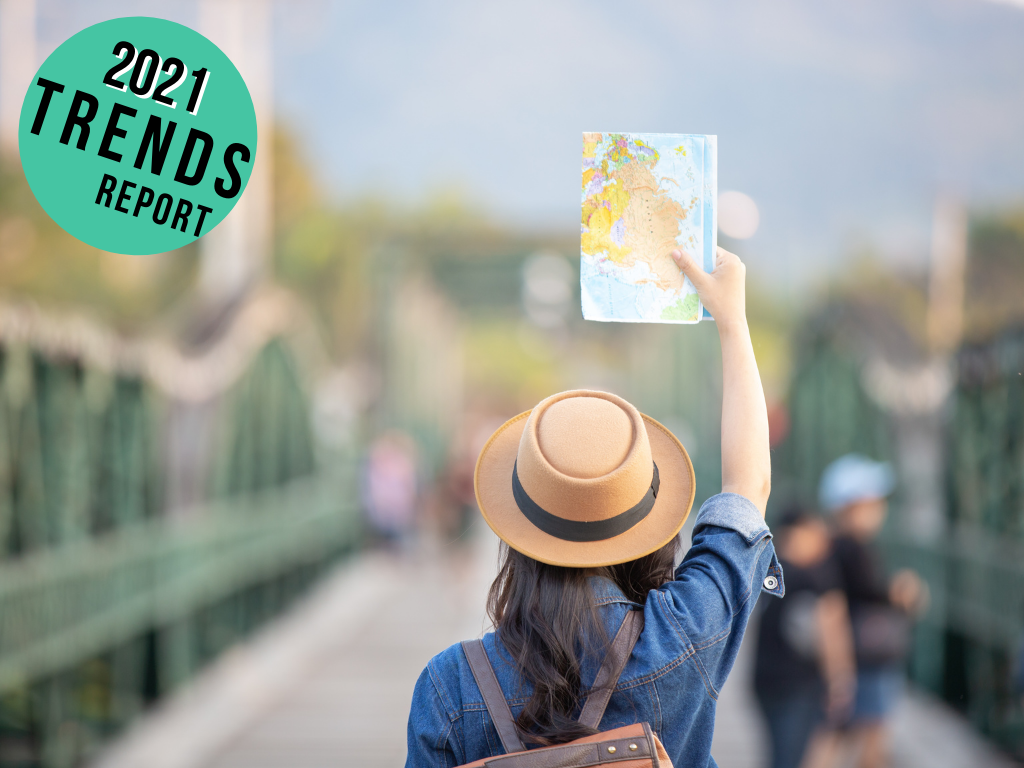
The last decade has seen us usher in an age of unprecedented consumer travel. It’s never been cheaper to fly by airplane, and everybody and their mom is now a frequent flyer as evidenced by every Instagram feed you follow. Until, Covid ended the (airport lounge) party. The pandemic brought global airlines to their knees, with international travel basically coming to a standstill overnight. It’s true that vaccines are here and countries are beginning to open up their borders again, but it’s going to be a while before air travel returns to pre-pandemic levels – queue the rise of local travel. Sure the Eiffel Tower has its charms, but what about hidden gems in your own backyard? We predict a huge trend upwards of local, regional and city-based exploration and adventuring, as people stay closer to home lest they get stranded in a foreign country away from their family for months on end, not to mention that planet-forward younger folks have serious flygskam. This trend will be a huge boon for SMEs all over the globe as local residents become the new international tourists and help sustain regional economies.
Lead image created by Green Queen Media.


